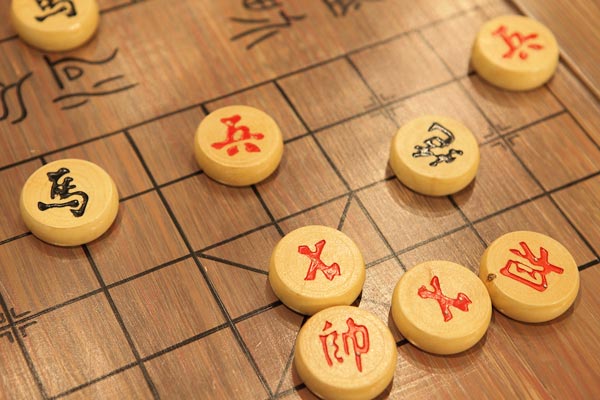Papermaking is one of the four great inventions of ancient China. Xuan paper is an outstanding representative of traditional handmade paper, with the characteristics of soft and tough texture, no moth or rot. Since the Tang Dynasty (early 8th century AD), it has been the best carrier for calligraphy, painting and classic printing, and it has not been replaced by machine-made paper. There are 108 processes in the traditional Xuan paper making technique, which have strict requirements on water quality, raw material preparation, equipment production and process control. This technique has been passed down from generation to generation through oral transmission and continuous improvement. It has been combined with a variety of cultural elements and has had a profound impact on the inheritance of Chinese national culture. It has played an important role in promoting national identity and maintaining cultural diversity.
Xuan paper is made of euphorbia bark as the main material, supplemented with sand field straw. The ancient Xuan paper making method consists of 108 processes. Paper drying is divided into 7 steps. Through mixing, pasting, pouring, whipping, making, drying and collecting paper, the paper is turned into paper, which has the reputation of "paper lasting a thousand years". In the process of people's exploration and practice, it is combined with various cultural elements, which plays an important role in promoting national identity and maintaining cultural diversity.

Technology characteristics
Types
There are many types of Xuan paper. According to the material ratio, it can be divided into three categories: cotton material, pure skin, and special pure. There are dozens of varieties and specifications. There are also a wide variety of processed paper (cooked Xuan paper) and Xuan paper products such as albums and fans. The main raw materials for papermaking are mostly plant fibers, mainly bamboo and wood. The fiber of wood is flexible and the paper made has strong ink absorption; the fiber of bamboo is brittle and hard, and the paper made has weak ink absorption. Therefore, it is divided into two categories according to this characteristic: weak ink absorption paper and strong ink absorption paper. Weak ink absorption paper is mostly made of bamboo fiber, the paper surface is smoother, the ink floats on the surface, and it is not easy to spread, so the color is bright. It is mainly paper, such as Chengxintang paper, mud gold paper, etc. Strong ink-absorbing paper is mostly made of wood fiber, with strong ink absorption and rough surface. Once the ink falls on the paper, it spreads easily. When writing, it is often added with pulp or wax. The luster is not as bright as that of paper, and it is more subtle.
Texture
Xuan paper has a pure white and fine texture, clear texture, soft and tough, unbreakable, shiny but not slippery, absorbs water and moisturizes ink, is suitable for writing and painting, and is anti-corrosive and anti-moth, so it is known as "paper that lasts a thousand years" and "the king of paper". When writing and painting on Xuan paper, the ink rhyme is clear, the layers are distinct, and the bones are reserved, giving people a feeling of jumping on the paper and being in high spirits.

Process
The production of Xuan paper uses the bark of the deciduous tree of the elm family and the selected sand field straw as raw materials, and makes them into bark pulp and straw pulp respectively, and then mixes them in different proportions, adds paper medicine made of kiwi vine juice, and copies different varieties of Xuan paper. The entire production process has more than 100 steps, and to master this set of complex skills, it is necessary not only to rely on the inheritance between masters and apprentices, but also to rely on the long-term practice and understanding of the maker himself. Before making Xuan paper, it must go through a leather material making process and a grass material making process. The leather material making mainly refers to the processing of papermaking raw materials such as sandalwood fiber, which includes more than 30 tedious small processes, such as peeling, stepping on the skin, spreading it to burn the skin, whipping the skin and washing the skin, bleaching it into sandalwood fiber material, etc. The grass material making process mainly processes grass fibers such as rice straw, which includes about 20 small processes, such as selecting grass, cutting grass, pounding grass, repeatedly steaming and sun drying, etc. until it is finally bleached into grass fiber material. After these two processes are completed, the ingredients for making Xuan paper can be prepared, that is, the sandalwood fiber material and the grass fiber material are mixed in a certain proportion. The proportions of the prepared materials will be different depending on the type of paper required. The prepared materials need to be screened, beaten, washed, etc., and finally made into a mixed pulp. This mixed pulp is mixed with appropriate water, and then with glue added with kiwi vine juice, and then after scooping, pressing and baking, the quality of the paper and the effect of ink bleeding are basically determined, becoming the base paper of Xuan paper. However, as a commodity, Xuan paper is not enough. The finished product of Xuan paper has very high standards. It is not only required to be tough, soft, flat, and have a faint bamboo curtain pattern, but also to make the cutting edges neat and clean, and there should be no folds, cracks, holes, sand and attachments on the paper. Therefore, it is necessary to identify and select the formed paper one by one, and then cut the rough edges of the selected paper, and then print, alumize, polish, package, etc., before it can become the world-renowned Xuan paper.

Inheritance value
The Xuan paper making skills have been passed down from generation to generation for a long period of time. In people's exploration and practice, its skills are becoming more and more perfect. For this kind of precious traditional paper, most of the manual production process cannot be replaced by machine production, and the precious cultural value and historical accumulation carried in it will also be passed down from generation to generation by producers and users.
Inheritance status
The raw materials for Xuan paper production - the bark of the Chinese taro, the collection of long-stalked rice, have poor economic benefits, and there is a serious crisis in raw materials; at the same time, due to the influence of some manufacturers' bad business practices, counterfeit products have damaged the reputation of Xuan paper, and the market is almost chaotic; the inheritance of Xuan paper making skills is worrying.




